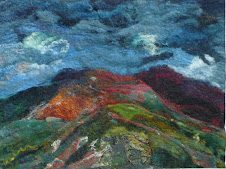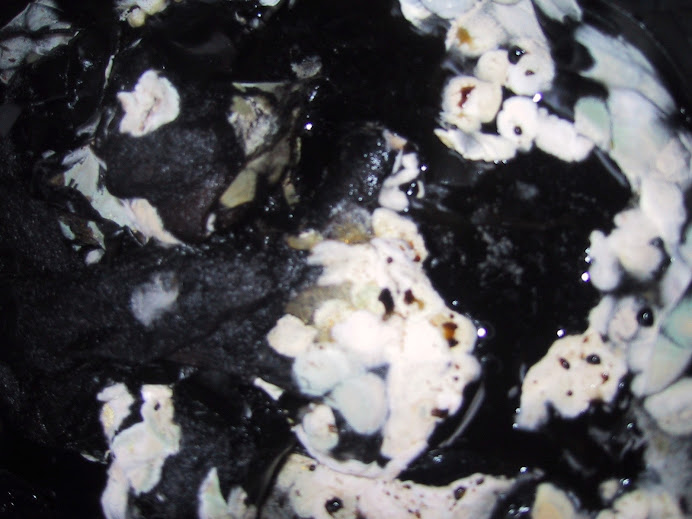
The purple loostrife was soaked overnight and today has been heated gently. The water is a very strong yellowy brown . This seems to be a characteristic colour of any plant containing a high level of tannin so I am optimistic that I may get my much desired black. If you think that I being a bit bizarre about black this is because for the natural dyer it is a most interesting colour to get. Black clothes were bequeathed in wills in Tudor times and I am always searching for a good black for a medieval hat maker Rachel Frost who wants a black that is historically accurate. I made her a wonderful very dark grey in cochineal, oxalic acid and iron which is Fred Gerber recipe but Rachel found it was not very lightfast which given it was cochineal and iron was most surprsing and I was embaressed I had not done a lighfastness test on it. In answer to Bettina I have tried iris root and got nothing -just a pale yellow and this was after some chopped iris root had been in soak for over a year in a small jar. ( I had forgotten about it) . It seems to be such a common story that iris root (iris pseudoorus give black that I have three thoughts on it. 1. is that someone said it gave a black and many other natural dyers have just picked this up in their list without trying it. 2. It only gives black in certain circumstances such as growing in a tannin rich environment such as a bog which means with added iron it will give a black. 3.I am not a good enough dyer!
I haven't tried meadowsweet. Is it supposed to give black?
If you are getting fed up with black so am I a bit so I went out to my studio and made a very colourful piece of felt just to make up for it. Will post a picture tommorrow



























Well, I've been interested in your quest for black. I've heard it is a difficult color to get but if anyone can do it, you can Helen!
ReplyDeletemaybe it's like the elusive "magenta" with dandelion and blue with elecampane? never worked for me either. does it have to be black on white fibre base? maybe it would be easier to achieve blacks on darker fleece, brown for example? the downside is - there's no naturally black silk fibre available! I think blacks are a problem for every re-enactor, who tries to be true to the time he/she represents. I have had a black by accident - with logwood, but it's no good really. it's very washfast (even in the machine when felting - with washing powder added!) - but it's not rubfast at all before that:(( and it has a purplish tint to it (and a lot of reenactors for earlier periods wouldn't use it anyway, I guess). on with the quest for true and stable black!:))
ReplyDelete